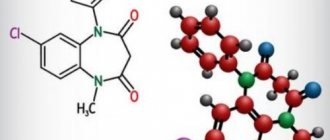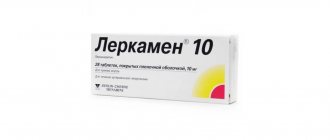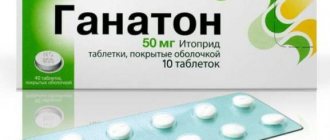Sodium bicarbonate, sodium bicarbonate, sodium bicarbonate, baking soda are the names of the same chemical compound, known to every person as “baking soda.” It is a good leavening agent for dough. Soda solution can relieve toothache. But this is not the entire range of applications of this “miracle” substance. In fact, it is difficult to do without sodium bicarbonate in everyday life, in cooking, in medicine, and in many other areas of activity.
History of creation
Baking soda has been used in baking since ancient times. It was found by archaeologists during excavations of caves of the 1st-2nd centuries BC. Then it was extracted from the ash of seaweed or found in the form of a mineral. This chemical compound was actively used in ancient Egypt.
For the first time, the chemical formula of the compound - NaHCO3 - was established by the French scientist Henri de Monceau. Thanks to this discovery, baking soda began to be produced synthetically, which significantly reduced its cost and expanded its range of uses. Since the discovery of the formula, methods for its synthesis have constantly changed, improved, and become more economically profitable.
Methods of obtaining
Content:
- History of creation
- Chemical properties
- Beneficial features
- Possible harm
- Medical use
- Use in cooking
- Application on the farm
- Use in cosmetology
- Other uses
- Industrial use
- How to select and store
The first method of industrially producing sodium carbonate was to dissolve rock salt in water, mix the solution with limestone and charcoal, and then heat it in a furnace. However, as it turned out, the output was not baking soda, but soda ash. In addition, this activity left a lot of toxic waste (calcium sulfide and hydrogen chloride), so it was quickly abandoned.
Today, baking soda is produced in two ways - “dry” and “wet”, each of which is based on the carbonization reaction (enrichment of the solution with carbon dioxide).
Types of soda
From a chemical point of view and area of application, there are several types of soda: baking soda (drinking soda), ash soda (linen soda) and caustic soda (sodium hydroxide).
SODA
SODA is sodium carbonate Na2CO3, a colorless crystalline substance, very hygroscopic, melting at 858°C and highly soluble in water. When saturated aqueous solutions of soda are cooled below 32–35° C, crystals of sodium carbonate decahydrate Na2CO3·10H2O - sodium carbonate decahydrate - are released. If you evaporate an aqueous solution of soda, then at temperatures above 113 ° C anhydrous sodium carbonate Na2CO3 will crystallize. Anhydrous sodium carbonate in technology and everyday life is called soda ash, and decahydrate is called crystalline soda. There is also sodium bicarbonate NaHCO3, better known in everyday life and in medicine as drinking or baking soda.
Also on topic:
SODIUM
Soda was known to man about one and a half to two thousand years BC, and maybe even earlier. It was mined from soda lakes and extracted from a few deposits in the form of natron minerals Na2CO3·10H2O, thermonatrite Na2CO3·H2O and trona Na2CO3·NaHCO3·2H2O.
The first information about the production of soda by evaporating water from soda lakes dates back to 64 and is given in the work of the Roman physician Dioscorides Pedanius on medicinal substances. Both to him and to the alchemists of all countries until the 18th century. soda seemed to be a certain substance that hissed with the release of some kind of gas when exposed to the acids known at that time - acetic CH3COOH and sulfuric H2SO4.
Also on topic:
CHEMICAL ELEMENTS
It is now known that fizzing is the result of the release of carbon dioxide gas (CO2) as a result of reactions
Na2CO3 + 2 CH3COOH = Na(CH3COO) + CO2 + H2O,
Also on topic:
ALKALI PRODUCTION
Na2CO3 + 2 H2SO4 = 2 NaHSO4 + CO2 + H2O,
where sodium acetate Na(CH3COO) and sodium hydrogen sulfate NaHSO4 are also formed.
In the time of Dioscorides Pedanius, no one had any idea about the composition of soda, because carbon dioxide was discovered by the Dutch chemist Jan van Helmont (who called it “forest gas”). only six hundred years later
They learned to produce artificial soda after a long and painful search only in the 18th century. But first it was necessary to determine the composition of this substance, isolating it in a fairly pure form. In 1736, the French chemist, physician and botanist Henri Louis Duhamel de Monceau, using water from soda lakes and using the recrystallization method, first isolated pure soda. He was able to establish that soda contains the chemical element “sodium”. A year later, Duhamel and the German chemist Andreas Sigismund Marggraff came to the conclusion that soda Na2CO3 and potash (potassium carbonate K2CO3) are different substances, and not the same thing, as previously thought.
Duhamel tried to obtain soda by reacting acetic acid CH3COOH with sodium sulfate Na2SO4. From the point of view of a modern chemist, this is completely meaningless, but Duhamel did not know the composition of either of the starting substances he took. He also did not know that a strong acid (sulfuric acid) cannot be displaced from salts by a weak acid (acetic acid). However, Duhamel made an interesting observation: when a mixture of sodium sulfate and acetic acid was heated, vapors began to be released, which were ignited by the flame of a candle. It was quite volatile and flammable acetic acid...
History knows many other, sometimes dangerous attempts to obtain soda. So, for this purpose, Marggraf mixed sodium nitrate with coal, and then heated the mixture. The experiment ended with a flash of the mixture that burned his face and hands. Marggraf did not take into account that it is enough to add sulfur to a mixture of sodium nitrate (sodium nitrate) and coal, and one of the types of gunpowder will be obtained.
True, when carrying out the reaction
4NaNO3 + 5C = 2Na2CO3 + 3CO2 + 2N2
managed to get some soda, but at what cost!
The first industrial method of producing soda originated in Russia. In 1764, the Russian chemist, Swedish-born academician Erik Gustav Laxman reported that soda can be obtained by sintering natural sodium sulfate with charcoal.
In this case the reaction occurs:
2Na2SO4 + 3C + 2O2 = 2Na2CO3 + CO2 + 2SO2
Here, in addition to sodium carbonate Na2CO3, two gaseous substances are formed - carbon dioxide CO2 and sulfur dioxide SO2.
Since natural sodium sulfate often contains an admixture of calcium carbonate CaCO3 (limestone), this reaction is accompanied by a second one:
CaCO3 + C + Na2SO4 = Na2CO3 + 4CO + CaS,
where gaseous carbon monoxide CO is released and slightly soluble calcium sulfide CaS is obtained, which, when the mixture is treated with water, is separated from sodium carbonate. The last stage of the process is the evaporation of the solution filtered from the precipitate and the crystallization of sodium carbonate.
Laxman produced soda using his own method in 1784 at his own glass factory in Taltsinsk near Irkutsk. Unfortunately, this method did not receive further development and was soon forgotten. But back in 1720, Peter I, answering Prince Golitsyn’s question about why “zoda” was needed, wrote: “Zodoa softens wool.” In 1780, the Russian academician Gildenstedt Fr.
“Zoda” or “itch” was the name given to soda in Russia. Despite the abundance of its own raw materials for the production of soda, it was imported into Russia from abroad until 1860.
In 1791, the French physician and chemist-technologist Nicolas Leblanc, knowing nothing about Laxman’s method, received a patent for “Method for converting Glauber’s salt into soda” (Glauber’s salt is sodium sulfate decahydrate Na2SO4 10H2O). Leblanc proposed fusing a mixture of sodium sulfate, chalk (calcium carbonate) and charcoal to produce soda. In the description of the invention, he stated: “A lot of lights flash above the surface of the melting mass, similar to the lights of candles. The production of soda is completed when these lights disappear."
When the mixture is fused, the reduction of sodium sulfate with coal occurs:
Na2SO4 + 4C = Na2S + 4CO
The resulting sodium sulfide Na2S reacts with calcium carbonate CaCO3:
Na2S + CaCO3 = Na2CO3+ CaS
After the coal and carbon monoxide CO are completely burned out (“the lights disappear”), the melt is cooled and treated with water. Sodium carbonate passes into the solution, and calcium sulfide remains in the precipitate. Soda can be isolated by evaporating the solution.
Leblanc offered his technology for producing soda to Duke Philippe of Orleans, whose personal physician he was. In 1789, the Duke signed an agreement with Leblanc and allocated him two hundred thousand silver livres for the construction of the plant. The soda factory in the Paris suburb of Saint-Genis was called “Franciade – Soda Leblanc” and produced 100–120 kg of soda daily. During the French Revolution in 1793, the Duke of Orleans was executed, his property was confiscated, and the soda factory and Leblanc's patent itself were nationalized. Only seven years later, Leblanc was given back the ruined plant, which he was unable to restore. Leblanc's last years were spent in poverty, and in 1806 he committed suicide.
Leblanc soda production technology began to be used in many European countries. The first soda plant of this type in Russia was founded by industrialist M. Prang and appeared in Barnaul in 1864. But a few years later, a large soda plant was built in the area of the current city of Berezniki, where 20 thousand tons of soda were produced per year. This plant used a new technology for the production of soda - the ammonia method, invented by the Belgian chemical engineer Ernest Solvay. Since that time, factories in Russia and other countries that used the Leblanc method, unable to withstand the competition, began to gradually close: Solvay’s technology turned out to be more economical.
The ammonia method for producing soda was proposed back in 1838–1840 by English chemical engineers G. Gray-Dewar and D. Hemming. They passed gaseous ammonia NH3 and carbon dioxide CO2 through water, which, when reacted, gave a solution of ammonium bicarbonate NH4HCO3:
NH3 + CO2 + H2O = NH4HCO3,
and then sodium chloride NaCl was added to this solution to isolate sodium bicarbonate NaHCO3, which is poorly soluble in the cold:
NH4HCO3 + NaCl = NaHCO3Ї + NH4Cl
Sodium bicarbonate was filtered off and converted to soda by heating:
2 NaHCO3 = Na2CO3 + CO2 + H2O
Carbon dioxide CO2, necessary for the process, was obtained from calcium carbonate CaCO3 - chalk or limestone - by calcination:
CaCO3 = CaO + CO2,
and the resulting calcium oxide CaO, after treatment with water, gave calcium hydroxide Ca(OH)2:
CaO + H2O = Ca(OH)2,
necessary to obtain ammonia NH3 from ammonium chloride NH4Cl:
2 NH4Cl + Ca(OH)2 = 2 NH3 + CaCl2 + 2 H2O
Thus, ammonia was in circulation all the time and was not consumed; only calcium chloride CaCl2 remained as a production waste.
Ernest Solvay did not introduce fundamental innovations into the chemical basis of the soda process of English engineers, he only technologically designed the production, however, this is also not easy. In particular, he used column-type devices here, which made it possible to carry out the process continuously and achieve a high yield of product.
The advantages of the ammonia method over the LeBlanc method were the production of cleaner soda, less pollution and fuel economy (since the temperature is lower). All together, this led to the closure of almost all factories using the Leblanc method in the 1916–1920s.
The first plants in the world to use the ammonia method for producing soda were the Belgian plant in Kuye, built according to the design of Solvay himself in 1865, and the Kama-Soda Plant of Likhachev in Russia, which began operating in 1868. The Russian plant was created by Colonel Ivan Likhachev on his estate on the banks of the Kama River in the Kazan province. Likhachev extracted ammonia NH3 by dry distillation of waste, which was supplied to him by almost two hundred tanneries from all over the area. Carbon dioxide CO2 was produced by calcining limestone found nearby. The plant did not last long and was closed after four years due to unprofitability: both leather waste and NaCl table salt had become much more expensive.
Currently, the world produces several million tons of soda per year.
Sodium carbonate is used in glassmaking (this is a component of the charge - a mixture of starting materials from which glass is melted), for the production of soap and other detergents, in the pulp and paper industry (for pulping). A lot of soda is consumed in the technological process of producing aluminum; it is soda that is used to process the raw material of the aluminum industry - bauxite. Sodium carbonate neutralizes acids in industrial wastewater, including during the purification of petroleum products, and precipitates insoluble carbonates and hydroxides from salt solutions, which after calcination are used as pigments:
Sodium bicarbonate also has its uses - it serves as a source of carbon dioxide when baking bread and confectionery, carbonated drinks, and also in fire extinguishers. In addition, baking soda still takes its rightful place in the home medicine cabinet as one of the simplest and cheapest, but very necessary medicines.
Lyudmila Alikberova
Chemical properties
Sodium bicarbonate is a weak acid salt of carbonic acid. They are small colorless crystals, which, when the temperature rises to 50-60°C, begin to “give up” a molecule of carbon dioxide, gradually decomposing to sodium carbonate (soda ash).
Reacts with acids to form salts (chloride, acetate, sodium sulfate) and carbonic acid, which instantly breaks down to water and carbon dioxide. The powder is poorly soluble in water and is easily separated by filtration.
How is soda made?
Today, baking soda is produced using a method that was invented back in 1861 by the Belgian chemist Ernest Solvay.
The Solvay method turned out to be more environmentally friendly and effective than all previous methods of making soda. It was Solvay who built the first soda plant in Russia in 1883 on Berezovoy Island in the Perm province, which is still in operation today! True, they produce soda ash and lime milk there, which, despite their names, are not at all suitable for food, but are necessary for the chemical industry. To obtain sodium bicarbonate (also known as sodium bicarbonate, sodium bicarbonate and baking soda), you need limestone, deposits of which are located near production in the city of Sterlitamak. Limestone is burned in kilns, lime is obtained and a saline solution is added to it, and the resulting mixture is evaporated with ammonia. This produces technical sodium bicarbonate, but it is not baking soda yet - it needs to be purified. To do this, soda is dissolved in water and lye, then bicarbonate decomposes in a decarbonizer under the influence of steam: purified sodium bicarbonate precipitates, and harmful substances are removed. Next, the product is filtered, dried, crushed and packaged in packs.
Soda never remains indifferent in the company of vinegar
Beneficial features
The benefits of sodium bicarbonate come from its alkaline pH. It is the ability to react with acids and alkalize the environment that underlies the following beneficial properties of baking soda:
- acid neutralizing;
- antiseptic;
- anti-inflammatory;
- antipruritic;
- drying;
- antifungal;
- sputum thinner;
- softening and whitening skin.
Such a variety of useful properties allows this compound to be used in folk and traditional medicine to treat many diseases and normalize human well-being in various pathological and physiological conditions.
Task 33
Task 33.1
Write the reaction equations that can be used to carry out the following transformations:
When writing reaction equations, use the structural formulas of organic substances.
Source - Demo version of the KIM Unified State Exam in Chemistry 2019
Solution
1) Under the specified conditions (H2SO4, 180 ᴼC), intramolecular dehydration of 1-propanol occurs with the formation of propylene (substance X1):
2) The interaction of propylene with HCl leads to the formation of 2-chloropropane (substance X2) (hydrohalogenation reaction):
3) When 2-chloropropane reacts with an aqueous solution of NaOH, –Cl is replaced by a hydroxyl group, isopropanol is formed (substance X3):
4) Isopropanol under the influence of H2SO4 upon heating (180 ᴼC) undergoes intramolecular dehydration to form propylene (substance X1):
5) When exposed to an aqueous solution of KMnO4, propylene enters into a hydroxylation reaction to form propylene glycol (substance X4):
Task 33.2
Write the reaction equations that can be used to carry out the following transformations:
When writing reaction equations, use the structural formulas of organic substances.
Source - Open Unified State Exam task bank
Solution
1) Alkaline hydrolysis of 1,1-dibromopropane will lead to the formation of aldehyde - propanal:
2) When interacting with an acidified solution of potassium dichromate, propanal is oxidized into propanoic acid:
3) As a result of the reaction of propanoic acid with chlorine in the presence of red phosphorus, 2-chloropropanoic acid is formed:
4) 2-Chloropropanoic acid reacts with sodium bicarbonate to form the corresponding sodium salt:
5) The interaction of the sodium salt of 2-chloropropanoic acid with iodoethane leads to the formation of the corresponding ester - 2-chloropropanoic acid ethyl ester:
Task 33.3
Write the reaction equations that can be used to carry out the following transformations:
When writing reaction equations, use the structural formulas of organic substances.
Source - Open Unified State Exam task bank
Solution
1) Methylcyclohexane in the presence of platinum when heated will undergo a dehydrogenation reaction to form toluene:
2) As a result of the reaction with an aqueous solution of potassium permanganate, toluene is oxidized to potassium benzoate:
3) Fusion of potassium benzoate with potassium hydroxide will lead to the formation of benzene:
4) Nitrobenzene is obtained by nitration of benzene with a mixture of concentrated nitric and sulfuric acids:
5) Nitrobenzene is reduced by hydrogen released during the interaction of Fe and HCl to aniline. The latter can then react with HCl to form the corresponding salt - phenylammonium chloride:
Overall reaction equation:
Task 33.4
Write the reaction equations that can be used to carry out the following transformations:
When writing reaction equations, use the structural formulas of organic substances.
Source - Open Unified State Exam task bank
Solution
1) n-Butane in the presence of an AlCl3 catalyst isomerizes to isobutane:
2) The interaction of isobutane with bromine in the light will lead to the formation of 2-bromo-2-methylpropane:
3) 2-Bromo-2-methylpropane under the influence of an alcohol solution of potassium hydroxide is dehydrohalogenated to form isobutene (isobutylene):
4) The reaction of isobutene with a solution of potassium permanganate acidified with sulfuric acid will lead to the oxidation of the hydrocarbon with the formation of acetone and carbon dioxide:
5) Hydrogenation of acetone on nickel will lead to the formation of isopropyl alcohol (isopropanol):
Task 33.5
Write the reaction equations that can be used to carry out the following transformations:
When writing reaction equations, use the structural formulas of organic substances.
Source - Open Unified State Exam task bank
Solution
1) As a result of the interaction of benzene with chloromethane in the presence of an AlCl3 catalyst, an alkylation reaction occurs with the formation of toluene:
2) Bromination of toluene in the presence of the FeBr3 catalyst leads to the formation of 4-bromotoluene (p-bromotoluene) and 2-bromotoluene (o-bromotoluene):
3) The reaction of 4-bromotoluene (p-bromotoluene) with bromomethane and sodium metal leads to the formation of p-xylene (Wurtz-Fittig reaction):
4) Oxidation of p-xylene by the action of a solution of potassium permanganate acidified with sulfuric acid will lead to the formation of terephthalic acid:
5) Terephthalic acid with ethyl alcohol in the presence of a catalyst H2SO4 will enter into an esterification reaction to form an ester - terephthalic acid diethyl ester (diethyl terephthalate):
Task 33.6
Write the reaction equations that can be used to carry out the following transformations:
When writing reaction equations, use the structural formulas of organic substances.
Source - Open Unified State Exam task bank
Solution
1) Thermal decomposition of methane (temperature about 1000 ° C) leads to the formation of acetylene:
2) Acetylene adds water in the presence of divalent mercury cations to form acetaldehyde (Kucherov reaction):
3) The resulting ethanal (acetaldehyde) reacts with an ammonia solution of silver (I) oxide (silver mirror reaction), as a result of the oxidation of the aldehyde, ammonium acetate is formed:
4) Subsequent interaction with calcium hydroxide converts ammonium acetate to calcium acetate:
5) The decomposition of calcium acetate when heated will lead to the formation of acetone:
Task 33.7
Write the reaction equations that can be used to carry out the following transformations:
When writing reaction equations, use the structural formulas of organic substances.
Source - Open Unified State Exam task bank
Solution
1) Catalytic hydrogenation of divinyl (1,3 butadiene) leads to the formation of butene-2:
2) The reaction of butene-2 with a solution of potassium permanganate acidified with sulfuric acid will lead to the oxidation of the hydrocarbon with the formation of acetic acid:
3) Chlorination of acetic acid in the presence of red phosphorus will lead to the formation of chloroacetic acid:
4) Chloroacetic acid reacts with excess ammonia to form aminoacetic acid (glycine):
Cl-CH2-C(O)OH + 2NH3 → H2N-CH2-C(O)OH + NH4Cl
5) Subsequent interaction of aminoacetic acid with magnesium hydroxide converts the amino acid into the corresponding magnesium salt:
2H2N-CH2-C(O)OH + Mg(OH)2 → [H2N-CH2-C(O)O]2Mg + 2H2O
Task 33.8
Write the reaction equations that can be used to carry out the following transformations:
When writing reaction equations, use the structural formulas of organic substances.
Source - Open Unified State Exam task bank
Solution
1) Trimerization of ethylene (acetylene) when heated in the presence of activated carbon leads to the formation of benzene:
2) As a result of the alkylation of benzene with chloromethane in the presence of aluminum (III) chloride, toluene is formed:
3) Chlorination of toluene in the light will lead to the formation of benzyl chloride:
4) Benzyl chloride reacts with an aqueous solution of sodium hydroxide to form benzyl alcohol:
5) A solution of potassium dichromate acidified with sulfuric acid oxidizes benzyl alcohol into benzoic acid:
Task 33.9
Write the reaction equations that can be used to carry out the following transformations:
When writing reaction equations, use the structural formulas of organic substances.
Source - Open Unified State Exam task bank
Solution
1) As a result of the reaction with an aqueous solution of potassium permanganate, toluene is oxidized to potassium benzoate:
2) Fusion of potassium benzoate with potassium hydroxide will lead to the formation of benzene:
3) As a result of the alkylation of benzene with propylene in the presence of aluminum (III) chloride and hydrogen chloride, isopropylbenzene (cumene) is formed:
4) Isopropylbenzene is chlorinated in the light to produce 2-chloro-2-phenylpropane:
5) 2-Chloro-2-phenylpropane reacts with an aqueous solution of sodium hydroxide to form 2-phenylpropanol-2:
Task 33.10
Write the reaction equations that can be used to carry out the following transformations:
When writing reaction equations, use the structural formulas of organic substances.
Source - Open Unified State Exam task bank
Solution
1) Benzene is hydrogenated with excess hydrogen in the presence of platinum to cyclohexane:
2) Cyclohexane is brominated in the light to form bromocyclohexane:
3) Bromocyclohexane is dehydrobrominated under the action of an alcohol solution of potassium hydroxide to form cyclohexene:
4) Cyclohexene adds water to form cyclohexanol:
5) Cyclohexanol is oxidized under the action of a solution of potassium dichromate acidified with sulfuric acid into cyclohexanone:
Task 33.11
Write the reaction equations that can be used to carry out the following transformations:
When writing reaction equations, use the structural formulas of organic substances.
Source - Open Unified State Exam task bank
Solution
1) Methyl propionate undergoes a hydrolysis reaction to form propionic acid and methanol:
2) Methanol reacts with hydrogen chloride to form chloromethane:
3) Chloromethane alkylates benzene to form toluene:
4) As a result of nitration of toluene with a mixture of concentrated nitric and sulfuric acids, 4-nitrotoluene (p-nitrotoluene) is obtained:
5) 4-Nitrotoluene is reduced by hydrogen released during the interaction of Fe and HCl to 4-methylaniline (p-toluidine). The latter further reacts with HCl to form the corresponding salt:
Overall reaction equation:
Possible harm
Baking soda should be consumed internally in limited quantities and according to strict indications. Bicarbonate crystals in large quantities are toxic to the mucous membrane of the digestive system and can cause severe irritation and allergic reactions.
It is not recommended to use solutions based on sodium bicarbonate for people suffering from erosive and ulcerative processes of the stomach and intestines, low stomach acidity and anacid gastritis.
If you regularly inhale carbon dioxide vapor or bicarbonate crystals, for example, in the production of soda, irritation of the respiratory mucosa may occur.
Frequent use of soda solution threatens persistent organic disorders of the digestive system. Alkalinization of gastric juice occurs, as well as a shift to the highly alkaline side of the intestinal contents.
Medical use
Sodium bicarbonate is widely used in medicine. At the same time, soda is used in various fields: dermatology, gastroenterology, cardiology, pulmonology, dentistry, toxicology, and ENT pathologies. Sodium bicarbonate helps against heartburn, nausea, motion sickness.
This substance is used internally in the form of a soda drink and externally in dry form, in the form of a paste or aqueous solution for rubdowns, lotions, and baths.
In dentistry
Rinsing the mouth with a solution of sodium bicarbonate relieves local inflammation, relieves toothache, strengthens gums, and eliminates unpleasant odor. Baking soda can be used as a toothpaste substitute to whiten teeth.
In gastroenterology
For nausea, make a strong soda solution (1 tablespoon per glass of water) and drink it slowly. For severe heartburn, it is recommended to dissolve a teaspoon of soda in a glass of water and drink. Thus, the patient’s condition improves for some time. However, it should be noted that if you experience frequent heartburn, you should consult a doctor and not treat yourself with soda at home. The habitual intake of an alkaline solution causes a neutralization reaction between hydrochloric acid and soda, resulting in the release of a lot of carbon dioxide, which causes bloating. The resulting carbon dioxide irritates the chemoreceptors of the stomach, thereby stimulating a reflex increase in the formation of gastric juice.
In cardiology
Hydrocarbonate baths help normalize blood pressure and heart rate, which is useful in case of interruptions in the functioning of the heart and blood vessels. Soda increases urination, which reduces the total volume of circulating blood. As a result, the pressure of the blood column on the walls of blood vessels decreases and blood pressure drops slightly.
Taking sodium bicarbonate solution orally with a sharp increase in blood pressure is a first aid remedy for a hypertensive crisis at home. If you drink a soda drink along with antihypertensive medications, the effect will increase.
In dermatology
Soap and soda baths and applications help get rid of fungal nail infections, as well as calluses and corns. A paste of baking soda and water should be used to treat areas of skin burns when exposed to acids, as well as areas of skin with sunburn. You need to moisten the areas of mosquito bites and other insects on the skin with water with baking soda dissolved in it. For severe itching, you can sprinkle the skin with dry powder.
If you have problems with the smell of sweat, treat your armpits with a soda solution. Bacteria and fungi that multiply in sweat and produce acids that cause an unpleasant odor will die. Sodium bicarbonate neutralizes these acids and exhibits a moderate antiseptic effect.
Hydrocarbonate-based foot baths are made for fungal diseases of the feet and nails. They also help soften rough heel skin before a pedicure. Hot baths of a strong solution of baking soda help with felon (purulent inflammation under the nail).
For ENT pathologies
Sodium bicarbonate, when released into viscous sputum, reacts with the acids contained in it. The resulting bubbles of carbon dioxide and water dilute the mucus, increase its quantity and make coughing easier.
To prepare an expectorant for tracheitis, laryngitis, bronchitis, as well as for severe cough, dilute a teaspoon of baking soda in 200 ml of warm milk. This elixir is drunk before bed. Instead of such a drink, you can do steam inhalations with soda. A tablespoon of powder is diluted in a liter of hot water and breathed over it. To enhance the effect, you can add a few drops of essential oils of eucalyptus, pine or rosemary to the solution. Gargling with a solution of salt and soda relieves inflammation of the tonsils with sore throat.
Intravenous administration of a sterile aqueous solution of sodium bicarbonate is often used in intensive care, infectious diseases departments and toxicology for poisoning and intoxication. metabolic acidosis.
Sodium bicarbonate solution for infusion 40 mg/ml 200 ml, 28 bottles
Registration Certificate Holder
DALHIMFARM (Russia)
Dosage form
Medicine - Sodium hydrocarbonate
Description
Solution for infusion
transparent, colorless.
1 ml
sodium bicarbonate 40 ml
Excipients
: water for up to 100 ml.
100 ml - bottles for blood and blood substitutes (1) - cardboard packs. 100 ml - bottles for blood and blood substitutes (35) - cardboard boxes. 200 ml - bottles for blood and blood substitutes (1) - cardboard packs. 200 ml - bottles for blood and blood substitutes (28) - cardboard boxes. 400 ml - bottles for blood and blood substitutes (1) - cardboard packs. 400 ml - bottles for blood and blood substitutes (15) - cardboard boxes.
Indications
Metabolic acidosis (including with diabetes mellitus, infections, intoxication, kidney disease, anesthesia, in the postoperative period); as a symptomatic remedy for relieving heartburn, discomfort in the epigastrium associated with increased acidity of gastric juice; symptomatic treatment of cough with viscous and difficult to separate sputum in various diseases of the respiratory tract; sea and air sickness.
For local use: inflammatory diseases of the oral cavity, eyes, upper respiratory tract, for loosening earwax.
Contraindications for use
Conditions accompanied by the development of metabolic alkalosis.
pharmachologic effect
An antacid that regulates the blood circulation hormone. It has alkaline properties, increases the alkaline reserve of the blood. When taken orally, it quickly neutralizes the hydrochloric acid of gastric juice and has a quick but short-term antacid effect. Irritates the receptors of the gastric mucosa, increases the release of gastrin with secondary activation of secretion, can cause discomfort in the stomach (due to its distension) and belching.
It has an expectorant effect by reducing the viscosity of sputum due to a shift to the alkaline side of the reaction of bronchial mucus.
When absorbed, it leads to the development of alkalosis. Alkalinization of urine prevents the deposition of uric acid in the urinary tract.
Relieves symptoms of sea and air sickness.
Drug interactions
With simultaneous use, the excretion of amphetamine in the urine decreases due to an increase in urine pH under the influence of sodium bicarbonate.
When ingesting sodium bicarbonate while using lithium carbonate in established maintenance doses, a decrease in the concentration of lithium in the blood plasma is possible, which is due to the influence of sodium ions.
When used simultaneously with methotrexate, the excretion of methotrexate in the urine increases and its toxic effect on the kidneys decreases due to an increase in urine pH under the influence of sodium bicarbonate.
With simultaneous oral administration, the absorption of tetracyclines is reduced.
Due to the increase in urine pH under the influence of sodium bicarbonate, there is a delay in the excretion of ephedrine from the body and an increased risk of side effects (tremor, anxiety, sleep disturbances, tachycardia).
With intravenous drip administration of sodium bicarbonate, the antihypertensive effect of reserpine may be enhanced.
Dosage regimen
Apply orally, parenterally, locally externally. The dosage regimen depends on the indications and route of administration.
Side effect
With long-term use
possible development of alkalosis (sometimes uncompensated), accompanied by loss of appetite, nausea, vomiting, pain in the epigastric region, anxiety, headaches, and in some severe cases tetanic convulsions; increased blood pressure, flatulence (when taken orally).
special instructions
It is not recommended to use systematically due to the fact that when hydrochloric acid of the stomach is neutralized with sodium bicarbonate, carbon dioxide is released, which has a stimulating effect on the receptors of the gastric mucosa, increases the release of gastrin and can cause a secondary increase in secretion. In addition, with long-term regular use, urine may become alkaline and increase the risk of phosphate stones.
Intensive removal of CO2 can provoke perforation of the walls of the gastrointestinal tract.
In patients with underlying heart or kidney disease, excess sodium intake causes edema and heart failure.
Use for renal impairment
Restrictions for impaired renal function - With caution.
In patients with underlying kidney disease, excess sodium intake causes edema and heart failure.
Use in cooking
Sodium bicarbonate is also widely used in cooking. The ability of soda to release carbon dioxide when quenched with vinegar allows it to be used as a leavening agent. Slaked soda adds fluffiness to omelette and dough. You can quench soda with vinegar or add powder to sour cream or kefir dough. In the second case, lactic acid will play the role of vinegar.
Adding it to legume dishes allows you to reduce their cooking time. Using baking soda in a meat marinade can soften tough muscle fibers. Berry and fruit mousses, when a pinch of soda is added to them, become sweeter, and coffee and tea become more transparent and aromatic.
In order to get rid of nitrates in vegetables, they need to be soaked in a soda solution. Darkened potatoes can be lightened using the same method.
Application on the farm
The substance is also irreplaceable in everyday life. It is an excellent cleaning agent. To restore their shine, chrome items and silverware are rubbed with dry soda, washed with soapy water, and then wiped dry with a soft cloth.
Sodium bicarbonate powder applied to a damp sponge will remove scratches and abrasions on vinyl flooring. Tile, kitchen stove, sink and plumbing fixtures can be cleaned of dirt by treating them with a thick mixture of baking soda and water. The same mixture helps get rid of the specific cat odor in places where there were “marks”.
To remove odors
The good hygroscopicity of sodium bicarbonate is the reason why it quickly absorbs odors, so it can be used to eliminate various odors. To get rid of unpleasant odors in the refrigerator, you need to pour dry powder into a glass and place it in the refrigerator door. By changing the contents of the glass as needed (once every 1-2 months), you can permanently get rid of the specific “refrigeration” smell.
If the smell of sour milk persists, the “smelling” containers should be cleaned with dry powder. Do the same with dishes that smell of fish.
If you pour a few tablespoons of powder into the drain hole, and after a few minutes turn on warm water, you can eliminate the unpleasant odor from the siphon under the sink.
Baking soda will also help deal with the unpleasant odor from the carpet. To do this, sprinkle the carpet with powder, leave it for 20-30 minutes, and then vacuum it thoroughly. However, this method is only suitable for non-fading carpets.
Using baking soda, you can also prevent the appearance of unpleasant odors, for example, from a washing machine or dishwasher when they are idle for a long time. When leaving home for a long time, you should rub the inside surface of the machines with dry bicarbonate and leave their doors ajar, and after returning, run them in the rinsing mode.
For clothing care
When machine washing, it is good to add baking soda to the washing powder. This will help get rid of the unpleasant odor in the washing machine, improve the quality of washing and the aroma of washed clothes. Clothes that smell bad can be washed in a machine by sprinkling them generously with baking soda.
A wet swimsuit will not become moldy and will not smell unpleasant if, after swimming in a pool or natural body of water, you put it in a bag with soda, and rinse it thoroughly and dry it at home.
Why else do you need soda?
Was this whole complex process of making baking soda invented just to make the loaves fluffier? This product can be very useful in everyday life, while it is absolutely safe, non-toxic, fire and explosion proof.
Soda is a universal detergent and cleaner: for dishes, tiles, sinks, bathrooms, but it does not harm the skin of your hands and is completely washed off with water. Using soda, you can descale the kettle (2 tbsp soda + 500 ml boiling water, 5 hours) and clean the drain pipes (5 tbsp soda + 100 ml vinegar, 1 hour).
Another feature of soda is that it not only cleans, but gets rid of unpleasant odors, so it can be applied to the carpet or upholstered furniture, left for 10-15 minutes, and then vacuumed.
Soda is a mild abrasive that cleans and disinfects children's clothes and toys, while being absolutely safe for babies' skin. To effectively remove stains and eliminate unpleasant odors during washing, you can add soda: unlike some washing powders, soda is hypoallergenic.
Baking soda is an excellent cleaning agent
Use in cosmetology
Baking soda is an excellent cosmetic product. A scrub made from crushed oatmeal and dry sodium bicarbonate has a good cleansing and whitening effect. After such a scrub, the skin becomes soft, and its regular use gets rid of acne. To add shine to your hair after washing your hair, you need to treat it with a solution of soda and lemon juice.
For weight loss
Sodium bicarbonate is also used for weight loss. To lose up to 2 kg in one procedure, you can fill a bath with warm water and dissolve 0.5 kg of sea salt and 0.3 kg of regular baking soda in it. Anyone losing weight needs to immerse themselves in such a bath for 20 minutes. In this case, the water temperature should be about 40°C. A soda-salt solution relaxes muscles, relieves fatigue and nervous tension, cleanses lymphatic vessels, and reduces tissue swelling. After a bath, you don’t need to dry yourself: just put on a warm robe. It is better to do such water procedures before bed.
Industrial use
Baking soda as a food additive E500 is used by the food industry in the production of bakery, flour, confectionery, sausage products, carbonated drinks, as well as for cleaning industrial equipment.
The chemical industry uses sodium bicarbonate in the production of dyes, reagents, household chemicals, and foams. Powder fire extinguishers are filled with bicarbonate.
In light industry, soda is used in tanning, for the production of artificial leather, silk and cotton fabrics.









